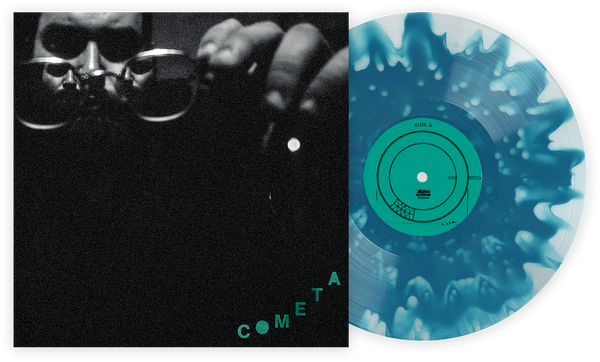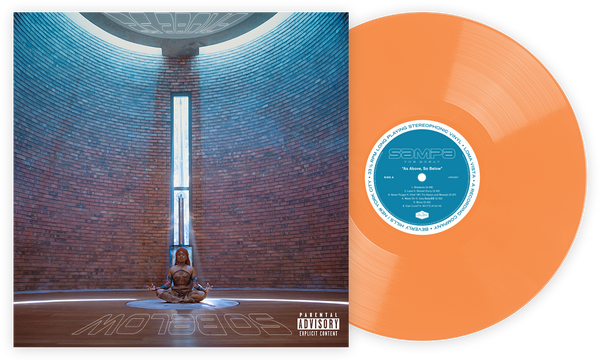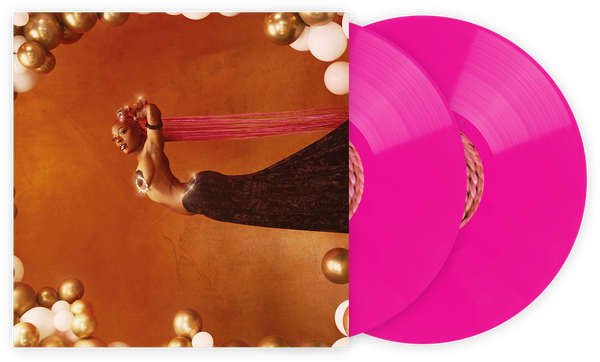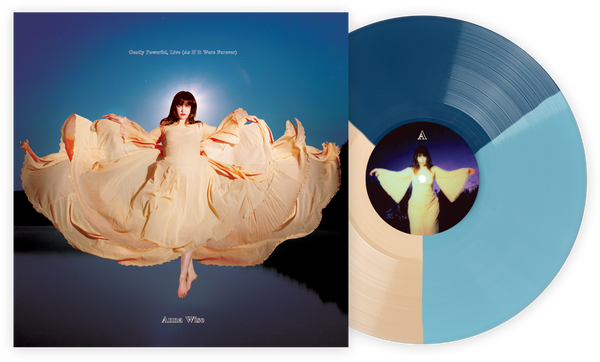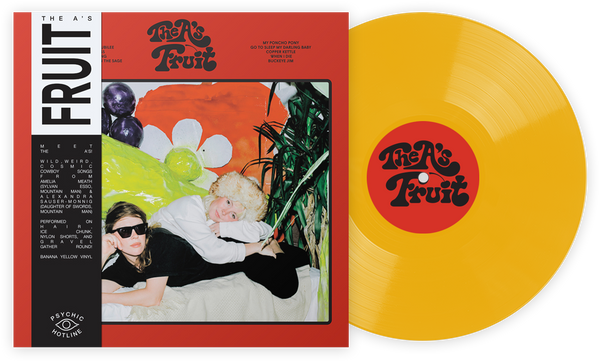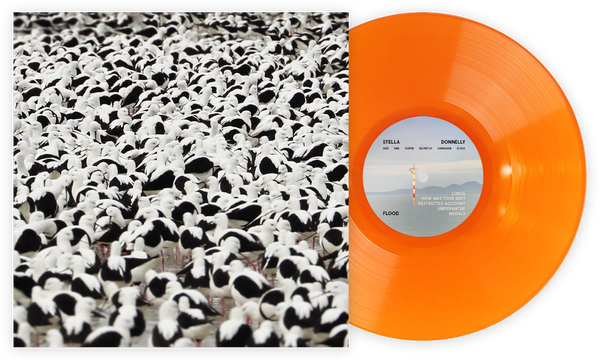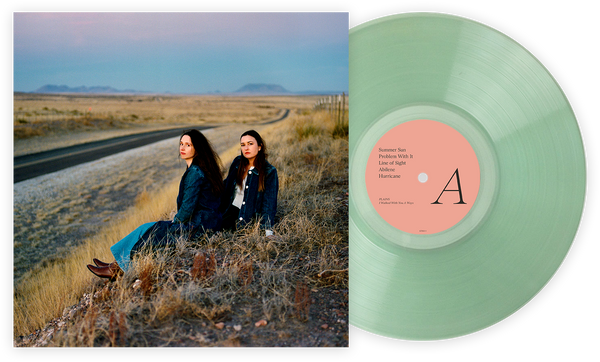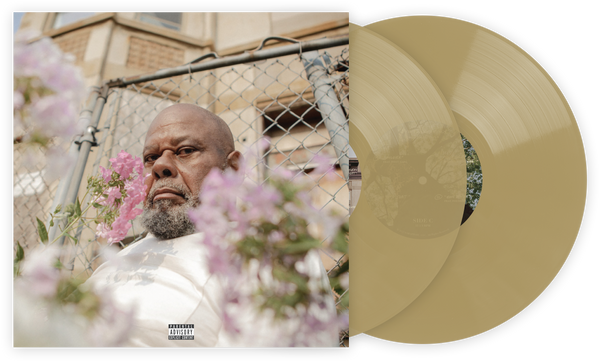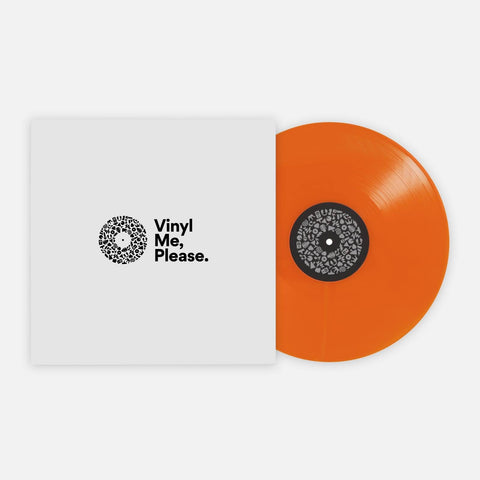The One You’re With: Stephen Stills In The Seventies
An Appreciation Of The Most Underrated Classic Rock Musician
If you took an unscientific poll of all rock n’ roll listeners-- from retiring boomers all the way to informed millennials-- and asked for their personal ranking of the Crosby, Stills, Nash, and Young membership, Stephen Stills would likely end up at the bottom of many, if not most, lists. His conventional, blues-informed voice seems slight compared to the more distinct, upper register harmonies demonstrated by the rest of the vocal powerhouse. Despite demonstrating his immense songwriting talents both with that group and its predecessor Buffalo Springfield, the industrious Stills struggled to shake the inferiority complex saddled on him by others in the ‘70s.
To some extent, the lack of appreciation for and familiarity with Stills’ solo discography from the period has to do with the decade’s preoccupation with breakups and makeups, not just with CSN or CSNY, but with other contemporaneous acts like the Beatles. The prospect of reunion perpetually filled the pages of music magazines and the heads of eager fans throughout the period. Away from the outsized expectations and internal discord of the larger group, Neil Young saw his star go supernova, while David Crosby and Graham Nash aligned for a number of memorable and successful records both as soloists and in duo mode. Compared to these peers, Stills looked the odd man out.
The hugely popular supergroup had essentially imploded while still insanely popular with fans and critics. Deja Vu, their massive second album (and first with Young), came out in March 1970; by September 1970, Young would be solo again, releasing After the Gold Rush, a country-fried outing that felt largely like a departure from the arena-sized folk rock dynamism of CSNY’s Deja Vu. Two months later, Stills would launch his own solo volley; his 1970 self-titled solo debut captured all the folk rock sounds that Young seemed to throw off.
Released via Atlantic Records, Stephen Stills boasts a droolworthy list of players helping to bring Stills’ vision to life: Eric Clapton, Rita Coolidge, Mama Cass Elliot, Jimi Hendrix, Booker T. Jones, Ringo Starr. Crosby and Nash also appear and, given their joint contributions, polyamorous hit single “Love The One You’re With” and the empowering Earth anthem “We Are Not Helpless” deserve consideration if not automatic inclusion in the CSN discographical canon. Bookending the album, both are big, bright, and beauteous pop imbued with all the exuberance of this period in music.
Even those who would dismiss Stills’ overall greatness in the ‘70s give this particular album of his at least some credit. A chart success, “Love The One You’re With” reached No. 14 on the Billboard Hot 100, while second single “Sit Yourself Down” hit No. 37. Thanks to the popularity of those songs, Stephen Stills peaked at No. 3 on the Billboard 200 album chart and enjoyed a 39 week run there.
As those who’d followed his work in Buffalo Springfield or with Al Kooper on 1968’s diverse and spontaneous Super Session knew, Stills did not exist solely to serve as a conduit for people’s CSNY desirees. The singer-songwriter contained rock multitudes, and the considerably less celebrated Stephen Stills 2 record from 1971 suffered critically, though not altogether commercially. Singles “Change Partners” and “Marianne” just barely missed the Top 40.
Though released less than a year after his first solo full-length, Stephen Stills 2 sounded notably different in places, more expansive and exploratory. Veterans from the prior album’s sessions--Clapton, Crosby, and Starr--had all returned to play on this diverse new set, joined by new contributors Nils Lofgren and Billy Preston, as well as a pedal steel guest slot from Jerry Garcia on the CSN-esque “Change Partners.” Stills appeared to enjoy the various metaphorical costume changes, be that in psych troubadour mode for "Fishes & Scorpions" or the southern shifts to bluegrass twang on "Know You Got To Run” and sugar-blasted honkytonk on “Marianne.” The bleating brass and proto-gang vocals of "Ecology Song" may have seemed heavy-handed to some, but it jibes with the coinciding jazz fusion of the times.
To be sure, Stills was experimenting, and invoking many of his influences from growing up a military brat in Florida and parts of Latin America. Much of the material--especially the grandiose pop of “Open Secret”--holds up to the hindsight of contemporary scrutiny. That abundance, that heterogeneity of sound of Stephen Stills 2 serves as fine prelude to his next major endeavor, the multi-headed and genre-hopping Manassas.
Formed in partnership with Stills’ then-current touring bandmates and some disgruntled members of the Flying Burrito Brothers including Chris Hillman, the new band came together in Miami at Criteria Studios roughly around the same time that the Allman Brothers Band recorded Eat A Peach there. That seminal 1972 southern rock classic sits well next to Manassas’ self-titled debut released just two months later, and both records offer side-by-side snapshots of their respective American musical experiences. (Manassas album closer “Blues Man” pays tribute to Duane Allman, who died tragically in 1971.)
The sprawling Manassas double LP turned the subgenre experimentations of Stills’ preceding solo record into something densely packed and oddly cohesive. Over the course of twenty-one tracks, the sizable group deliver an Americana masterpiece populated by guitar, mandolin, Latin percussion, piano, organ, fiddle--you name it. From song to song, the vibe changes without sacrificing continuity, on freewheelin’ country and western moments like “Fallen Eagle,” the sumptuous blues rock of "Jet Set," or the introspective rollicking folk of “Johnny’s Garden.” Album highlights “Colorado” and “It Doesn’t Matter” demand repeat listens, but no matter which of the eight sides you enter from, Manassas is a thing of rock majesty.
Not about to lose momentum, Stills reconvened the group for what would become 1973’s Down The Road in 1973. A considerably leaner and less ambitious album, it dutifully revisited the panoply of styles present on the prior release. Following that second and final Manassas studio record, CSNY regrouped for a botched studio project and then subsequently for their notoriously debauched and depraved 1974 “Doom Tour.” By Stills’ own admission, the legendary bender wasn’t nearly as rough on him as some of his later solo jaunts. Even with the band’s storied cocaine and booze binges, he was actually in some of the best physical shape of his life back then, as evidenced by the athletic twenty-something staring out from the cover of his 1975 solo return Stills.
A collection of tunes recorded at various times during the first half of the 1970s, the quasi-eponymous Stills album was his first for Columbia. (Months later, his former label Atlantic put out a live record culled from a pair of Chicago shows from the previous year.) Though the disparate provenances of the tracks made for a more ramshackle charm than the inherent solidarity of Manassas, Stills stays together better than most records of the so-called odds-and-sods variety. Some of these cuts come from his aborted 1973 solo project As I Come Of Age, with two featuring vocals by Crosby and Nash including the poppy soul of “First Things First.” One of the few actually recorded in 1975, catchy opener “Turn Back The Pages” reached No. 84 on the Billboard singles chart. Compared to the version heard on the nearly simultaneous Tonight’s The Night album, Stills’ take on the Young-penned “New Mama” has a fuller feel here that better captures its beauty.
With all the infighting and bad behavior of the fractured CSNY bunch, the ever-tenuous alliance of former Buffalo Springfield cohorts Stills and Young led to some quality music outside of the group’s studio efforts. Often miscategorized as a Young record despite being formally credited to The Stills-Young Band, 1976’s Long May You Run for Reprise very nearly became a full reunion quartet project. In the midst of working on their own Whistling Down The Wire, their third and final full-length as a pair that decade, Crosby and Nash were visited by Young and invited to join him and Stills’ active sessions at Criteria.
As Nash recounts in his candid memoir Wild Tales, many of the tunes that ultimately ended up on Long May You Run were already essentially done by the time he and Crosby arrived from Los Angeles. They laid down vocal harmonies and made as much progress on additional material as they could ahead of their own previously scheduled session to complete Whistling Down The Wire. Their departure apparently didn’t sit well with Stills, and while they had intended to return to Miami to finish what would’ve been the second CSNY album, Crosby and Nash’s contributions were unceremoniously stripped from the record.
Acrimony and opportunity loss aside, Long May You Run proved a very fine record without them, boasting four tracks penned by Stills. (Repeating a familiar trick, Atlantic dropped an opportunistic greatest hits set entitled Still Stills less than three months later.) While not as celebrated as the title track, his “Make Love To You” grooves with carnal purpose, made downright resplendent by the organ work by session player Jerry Aiello. Led by a Latin vamp, “Black Coral” recalls some of that Manassas flavor. Technically true to its title, “12/8 Blues” rekindles the guitarist’s passion for the form, while the piano-driven “Guardian Angel” ends the record on a more eclectic note.
A productive year for Stills, 1976 also yielded the solo endeavor Illegal Stills, released months ahead of both Long May You Run and Whistling Down The Wire. The title both a play on his name and a not-at-all-subtle reference to his drinking, the album features some of the same players as the Stills-Young Band one, sharing the core rhythm section of bassist George "Chocolate" Perry, drummer Joe Vitale, and Manassas percussionist Joe Lala. Songwriting credits include team-ups with Stills collaborators Donnie Dacus and Vitale’s Barnstorm bandmate Kenny Passarelli, as well as a cover of Neil Young’s “The Loner.”
Co-produced with Don Gehman, who also worked on Long May You Run and would find success in the following decade behind the boards for John Cougar Mellencamp, Illegal Stills provides a complimentary bookend for the Stills-Young record. Those acquainted with his discography to date should find politically charged opener “Buyin’ Time” very much in the vein of “Love The One You’re With” or “Carry On.” Spirited rockers “Circlin” and “The Loner” abut Spanish-language experiment “No Me Niegas” and the Southern folk ballad “Stateline Blues.” Arguably, the soft rock boom of the mid-Seventies owed a debt to the groundwork laid in part by Stills’ music, so it seems reasonable that “Closer To You” fits nicely in that mode.
A theoretically promising Stills-Young tour to support Illegal Stills and the duo’s then-forthcoming Long May You Run famously fell apart when Young ditched the group a few weeks in, signing off with an unapologetic and glib telegram that quoted the Allman Brothers Band’s aforementioned Eat A Peach. A tepid New York Times review of a problematic Long Island date suggests that was for the best, with rock critic John Rockwell also seizing the opportunity to promulgate the narrative of Stills as CSNY’s weakest link. With Young once again on the proverbial outs with all three of his erstwhile partners, it fortuitously paved the way for 1977’s CSN, their first studio album as a trio since 1969.
Returning to Criteria despite the bad mojo of the Long May You Run experience, Crosby, Stills, and Nash rediscovered their collective chemistry in the studio. In Wild Tales, Nash speaks highly of Stills’ contributions as a songwriter and performer, attributing some of that to the latter’s abstention from drinking during the session. He describes the songs coming out of his bandmate as confessional, stating in no uncertain terms that “Dark Star” is about none other than Joan Baez. Players beyond the primary trio included Stills rhythm familiars like Perry and Vitale, as well as Crosby and Nash’s preferred drummer of the decade Russ Kunkel. (Neil Young even showed up at Criteria unannounced at one point, though he doesn’t appear on record.)
As an album, CSN updated and upgraded the harmonious folk rock of their earlier recordings with the production standards and sonic aesthetics of 1977. Stills’ “See The Changes” comes close to those past glories, his adept acoustic playing providing a warm bed for their harmonies. The innovations sounded even more thrilling, present in the soft rock wonderment of Nash’s “Just A Song Before I Go” and the Spanish vibes of “Fair Game,” both of which prominently feature Stills’ guitar. The former reached No. 7 on the Hot 100, while the latter hit No. 43.
The response from fans was, as to be expected, substantial. Within months, CSN received platinum certification from the Recording Industry Association Of America. That near-immediate sales win for the reunited group overshadowed the quartet of gold album awards he’d scored for Stephen Stills, Stephen Stills 2, Manassas, and Long May You Run. The record eventually went quadruple-platinum.
Unfortunately, Stills chose to follow up that reunion record and its corresponding tour with 1978’s abysmal Thoroughfare Gap. Returning to work in Miami with CSN producers the Albert Brothers and a few of that album’s players, he overextended himself into dance music. Rock journalist/historian David Zimmer indicates in his biography of the band that it started out as parody with the goofy “Can’t Get No Booty.” But the bemusing and artificial sounding “We Will Go On” and “You Can’t Dance Alone” dive unironically into the shallow end of the day’s disco craze. Ironically, Stills was no stranger to the genre before Thoroughfare Gap, having appeared on the Bee Gees’ 1976 album Children Of The World.
Indeed, much of Thoroughfare Gap betrays Stills’ preceding history as a recording artist. Even when Stills’ prior solo albums presented creative hurdles to listeners, the leaps of faith felt generally worth it. Jumping into this one was about as rewarding as a mud puddle, one not unlike those the horse and jockey on its album art might have had to maneuver. Compounding the terrible disco decision making, Stills also included a few poorly conceived cover tunes in the mix. A flat “Midnight Rider” brings nothing to an unimpeachable Southern rock classic and his drab “Not Fade Away” only scarcely resembles the satisfying Buddy Holly original. Few of the non-disco originals are worth mentioning.
Throughout the ‘70s, Stills had a hand in a number of other people’s records. He contributed vocals to Young’s 1972 masterpiece Harvest and Traffic co-founder Dave Mason’s 1977 outing Let It Flow. As a guitarist, he guested on Eric Clapton’s eponymous solo debut, Grateful Dead drummer Mickey Hart’s Rolling Thunder, Joni Mitchell’s Blue, and Bill Withers’ Just As I Am. But mostly, Stills stuck to his own albums, cultivated his own sound, sought his own musical vision.
In our myopic Greatest Hits obsessed classic rock culture, it’s far too easy to overlook or just plain miss out on Stephen Stills’ catalog. Doing so is not merely a disservice not to his solo discography, but it unfairly downplays his participation and creativity in making the Crosby, Stills, Nash, and Young albums that have become iconic and canon. Unsung records like Stephen Stills 2 and Illegal Stills warrant fresh listens with open ears, and the streaming platforms make it easier than ever to do so. Vinyl purists can cop 180 gram reissued editions of Stephen Stills and Manassas, or dig in the crates at record stores for used copies of pretty much any of his albums from the period. With virtually no chance of another CSN or CSNY reunion left, Stills’ discography no longer needs to exist in their shadow.
Born, raised and still living in New York City, Gary Suarez writes about music and culture for a variety of publications. Since 1999, his work has appeared in various outlets including Forbes, High Times, Rolling Stone, Vice and Vulture, among others. In 2020, he founded the independent hip-hop newsletter and podcast, Cabbages.
Join the Club!
Join Now, Starting at $36Pages

